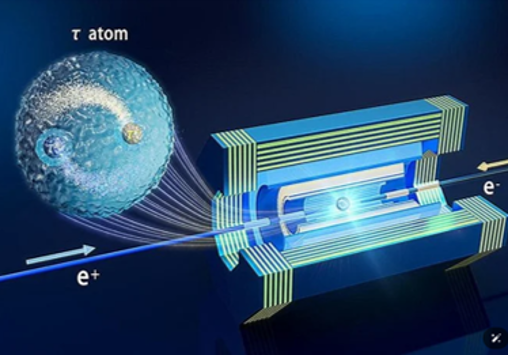Quantum physics has led to the discovery of atoms that are even simpler than hydrogen which contains one electron and one proton. This counters everything I learned in Grade 11 chemistry. How is it even possible? What we weren’t taught back then was that hydrogen atoms contain “structureless” electrons and “structured” protons. I didn’t know what these adjectives meant so I did some research.
It turns out that structureless electrons are negative-charged particles that contain no internal structure. They are indivisible. In quantum physics, structureless electrons exist in multiple states simultaneously. They can exhibit wave-particle duality meaning they act like a particle or a wave. Light is said to have wave-particle duality. We call light particles photons.
Structured protons are particles made up of three subatomic particles called quarks held together by a strong nuclear force. Quarks can come in several flavours: up, down, charm, strange, top and bottom. Structured protons contain two up quarks and one down quark.
So by now having read all that precedes this paragraph you know that hydrogen atoms aren’t just a proton and an electron bound together by a strong nuclear attraction. Instead, they are a hodgepodge of subatomic particles that are held together by strong electromagnetic forces.
Scientists have been finding subatomic particles for many decades. First to be discovered were protons and electrons. Then we found neutrons and the antiparticles of protons and electrons. Antiparticles are the opposites of electrons and protons. The antiparticle of an electron is a positron.
Joining the subatomic particle hit parade are muons, tauons, quarks and the more recently discovered Higgs Boson. Now you can add Tauonium to this list but although subatomic in size, it is actually an atom that should be added to the periodic table.
Tauonium is very tiny, just 1/1,741th the size of a hydrogen atom. It contains a tauon and its antiparticle. A recent article appearing in the Science Bulletin describes Tauonium as the smallest and heaviest atom discovered so far with pure electromagnetic interaction. Before its discovery only two atoms with pure electromagnetic interactions had been discovered: the first in 1951 exhibiting an electron-positron bound state, and the second in 1960 with an electron-antimuon bound state.
How was Tauonium found? Analyzing data in high-energy particle colliders to search for collisions between electrons and positrons led to its discovery. By focusing on these occurrences physicists were able to find tauons in pairs accompanied by neutrinos confirming the discovery.
Why is Tauonium considered such an important discovery? It should help physicists better understand the electroweak theory fundamental to the Standard Model of particle physics. It will unify the electromagnetic and weak forces into a single electroweak force and explain the mass associated with three of four subatomic intermediary particles. Finding it is much more than identifying a new type of atom. Its discovery will likely change our understanding of physics and the Universe.









